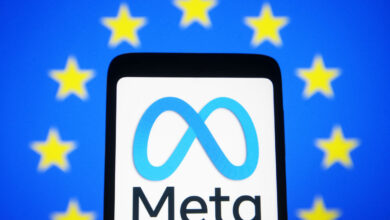The Surface event, Windows 11 and AI

If you can’t tell by now, just about every tech company is eager to pray at the altar of AI, for better or worse. Google’s recent I/O developer conference was dominated by AI features, like its seemingly life-like Project Astra assistant. Just before that, OpenAI debuted GPT 4o, a free and conversational AI model that’s disturbingly flirty. Next up is Microsoft Build 2024, the company’s developer conference that’s kicking off next week in Seattle.
Normally, Build is a fairly straightforward celebration of Microsoft’s devotion to productivity, with a dash of on-stage coding to excite the developer crowd. But this year, the company is gearing up to make some more huge AI moves, following its debut of the ChatGPT-powered Bing Chat in early 2023. Take that together with rumors around new Surface hardware, and Build 2024 could potentially be one of the most important events Microsoft has ever held.
But prior to Build, Microsoft is hosting a showcase for new Surfaces and AI in Windows 11 on May 20. Build kicks off a day later on May 21. For the average Joe, the Surface event is shaping up to be the more impactful of the two, as rumors suggest we will see some of the first systems featuring Qualcomm’s Arm-based Snapdragon X Elite chip alongside new features coming in the next major Windows 11 update.
That’s not to say it’s all rosy for the Windows maker. Build 2024 is the point where we’ll see if AI will make or break Microsoft. Will the billions in funding towards OpenAI and Copilot projects actually pay off with useful tools for consumers? Or is the push for AI, and the fabled idea of “artificial general intelligence,” inherently foolhardy as it makes computers more opaque and potentially untrustworthy? (How, exactly, do generative AI models come up with their answers? It’s not always clear.)
Here are a few things we expect to see at Build 2024:
New Surface hardware
While Microsoft did push out updates to the Surface family earlier this spring, those machines were more meant for enterprise customers, so they aren’t available for purchase in regular retail stores. A Microsoft spokesperson told us at the time that it “absolutely remain[s] committed to consumer devices,” and that the commercial focused announcement was “only the first part of this effort.”
Instead, the company’s upcoming refresh for its consumer PCs is expected to consist of new 13 and 15-inch Surface Laptop 6 models with thinner bezels, larger trackpads, improved port selection and the aforementioned X Elite chip. There’s a good chance that at the May 20th showcase, we’ll also see an Arm-based version of the Surface Pro 10, which will sport a similar design to the business model that came out in March, but with revamped accessories including a Type Cover with a dedicated Copilot key.
According to The Verge, Microsoft is confident that these new systems could outmatch Apple’s M3-powered MacBook Air in raw speed and AI performance.
The company has also reportedly revamped emulation for x86 software in its Arm-based version of Windows 11. That’s a good thing, since poor emulation was one of the main reasons we hated the Surface Pro 9 5G, a confounding system powered by Microsoft’s SQ3 Arm chip. That mobile processor was based on Qualcomm’s Snapdragon 8cx Gen 3, which was unproven in laptops at the time. Using the Surface Pro 9 5G was so frustrating we felt genuinely offended that Microsoft was selling it as a “Pro” device. So you can be sure we’re skeptical about any amazing performance gains from another batch of Qualcomm Arm chips.
It’ll also be interesting to see if Microsoft’s new consumer devices look any different than their enterprise counterparts, which were basically just chip swaps inside of the cases from the Surface Pro 9 and Laptop 5. If Microsoft is actually betting on mobile chips for its consumer Surfaces, there’s room for a complete rethinking of its designs, just like how Apple refashioned its entire laptop lineup around its M-series chips.
AI Explorer
Aside from updated hardware, one of the biggest upgrades on these new Surfaces should be vastly improved on-device AI and machine learning performance thanks to the Snapdragon X Elite chip, which can deliver up to 45 TOPS (trillions of operations per second) from its neural processing unit (NPU). This is key because Microsoft has previously said PCs will need at least 40 TOPs in order to run Windows AI features locally. This leads us to some of the additions coming in the next major build of Microsoft’s OS, including something the company is calling its AI Explorer, expanded Studio effects and more.
According to Windows Central, AI Explorer is going to be Microsoft’s catch-all term covering a range of machine learning-based features. This is expected to include a revamped search tool that lets users look up everything from websites to files using natural language input. There may also be a new timeline that will allow people to scroll back through anything they’ve done recently on their computer and the addition of contextual suggestions that appear based on whatever they’re currently looking at. And building off of some of the Copilot features we’ve seen previously, it seems Microsoft is planning to add support for tools like live captions, expanded Studio effects (including real-time filters) and local generative AI tools that can help create photos and more on the spot.
Smarter and more local Copilots
Microsoft wants an AI Copilot in everything. The company first launched Github Copilot in 2021 as a way to let programmers use AI to deal with mundane coding tasks. At this point, all of the company’s other AI tools have also been rebranded as “Microsoft Copilot” (that includes Bing Chat, and Microsoft 365 Copilot for productivity apps). With Copilot Pro, a $20 monthly offering launched earlier this year, the company provides access to the latest GPT models from OpenAI, along with other premium features.
But there’s still one downside to all of Microsoft’s Copilot tools: They require an internet connection. Very little work is actually happening locally, on your device. That could change soon, though, as Intel confirmed that Microsoft is already working on ways to make Copilot local. That means it may be able to answer simpler questions, like basic math or queries about files on your system, more quickly without hitting the internet at all. As impressive as Microsoft’s AI assistant can be, it still typically takes a few seconds to deal with your questions.
More from Microsoft at Build 2024
After all the new hardware and software are announced, Build is positioned to help developers lay even more groundwork to better support those new AI and expanded Copilot features. Microsoft has already teased things like Copilot on Edge and Copilot Plugins for 365 apps, so we’re expecting to hear more on how those will work. And by taking a look at some of the sessions already scheduled for Build, we can see there’s a massive focus on everything AI-related, with breakouts for Customizing Microsoft Copilot, Copilot in Teams, Copilot Extensions and more.
What else to look out for?
While Microsoft will surely draw a lot of attention, it’s important to mention that it won’t be the only manufacturer coming out with new AI PCs. That’s because alongside revamped Surfaces, we’re expecting to see a whole host of other laptops featuring Qualcomm’s Snapdragon X Elite Chip (or possibly the X Plus) from other major vendors like Dell, Lenovo and more.
Admittedly, following the intense focus Google put on AI at I/O 2024, the last thing people may want to hear about is yet more AI. But at this point, like most of its rivals, Microsoft is betting big on machine learning to grow and expand the capabilities of Windows PCs.
This article contains affiliate links; if you click such a link and make a purchase, we may earn a commission.
Source link




